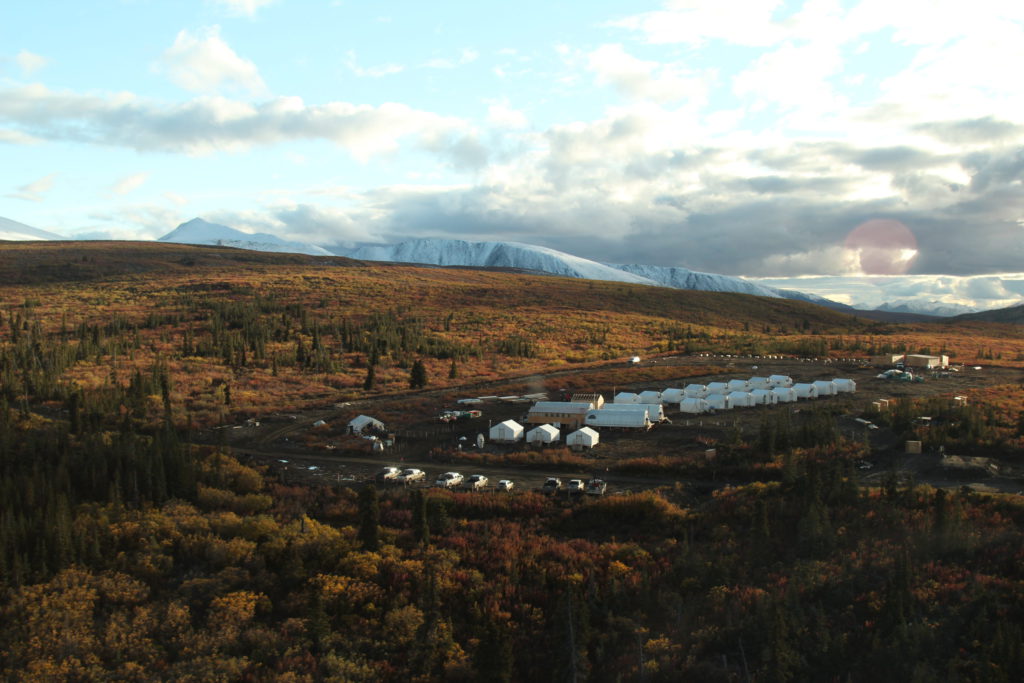BMC’s Kudz Ze Kayah project in Yukon can go ahead after talks help address Indigenous concerns, governments say

A government body’s decision re-opens a path to permitting for BMC Minerals’ Kudz Ze Kayah (KZK) zinc-lead-copper project in the Yukon, following consultations between governments and Indigenous authorities.
The Vancouver-based BMC, owned by private, UK-based firm BMC Ltd., is developing the critical minerals project located 115 km southeast of Ross River. KZK was paused last year when the Kaska Nation said the federal and Yukon governments didn’t address their concerns over wildlife and the environment at the mine’s proposed site.
“The decision document reapproves the project to proceed through the regulatory phase of permitting,” Allan Nixon, vice president of external relations told The Northern Miner on Wednesday. “This is very positive news and we are pleased to have a new decision document. We are just in the process of reviewing it in detail as there have been some changes in a few of the terms and conditions.”
“We will continue to engage with Kaska to ensure we address any remaining concerns they may have and to ensure we are maximizing opportunities for their participation in and benefit from the project.”
The document, issued on Friday, represents a green light on BMC’s path towards developing KZK, one of the few pre-production critical minerals projects in the Far North to advance past the feasibility study stage and into permitting. BMC first submitted its proposal for mine in 2017.
Kudz Ze Kayah, or ‘caribou country’ in the Kaska language, will cost $376 million to develop, and the open pit operation would have a nine-year life. According to a 2020 feasibility study, KZK has an after-tax net present value (at a 7% discount rate) of $617 million, and an internal rate of return of 45.9%. The mine would produce 7.8 million oz. of silver, 56,500 oz. of gold, 235 million lb. of zinc, 32 million lb. of copper and 56 million lb. of lead in concentrate annually during steady-state operations.
The decision document presents the outcome of talks held in February between the Yukon and federal governments, the Ross River Dena Council (RRDC), Liard First Nation (LFN) and community members. Those consultations were ordered by Yukon Supreme Court chief Justice Suzanne Duncan, who found last January that the Crown failed in its duty to consult and accommodate Kaska’s environmental concerns.
New conditions on KZK
Government authorities concluded in the document that KZK should go ahead without review but under a new terms and conditions.
Regulators must consult with the Kaska on KZK’s technical details and its potential impacts on Indigenous rights; the Kaska will play a key role in the review of mine closure plans and land use; and Kaska will be consulted about reviewing environmental monitoring and financial security.
“(Governments) are committed to working closely with Kaska in the regulatory process to determine if the Kudz Ze Kayah project can proceed to licensing,” reads the document issued by the Yukon Environmental and Socio-economic Assessment Board.
The Yukon government will also set up an independent Finlayson caribou herd oversight committee composed of territorial officials, LFN and RRDC members. That body will monitor protection measures, such as temporary pauses of rock blasting and transportation routes to minimize disturbances to caribou.
Scott Donaldson, CEO of BMC, told The Northern Miner at PDAC last week that he looks forward to sitting down with the Kaska and working through the decision document.
“I’m confident we’ve worked very hard to adopt as many of the Kaska requests as we possibly could,” he said.
Donaldson said BMC’s next steps are its permitting issues and consultations, with a final investment decision on the project expected in the first half of next year.
The Kaska Nation chief did not immediately respond to a request for comment.
Kaska sought review
The dispute over KZK began in June 2022, when the federal and territorial governments approved it following an environmental and socio-economic assessment.
But weeks later, the Kaska, on behalf of the RRDC announced a civil lawsuit against the governments, alleging it wasn’t properly consulted over the mine’s potential environmental impacts, including on caribou herds.
The RRDC petitioned the court to review how regulatory authorities had approved KZK, which led to a judicial hearing in Whitehorse last April, where lawyers for the Kaska, BMC, the Attorney General of Canada and Yukon presented arguments for their respective positions.
Duncan reserved her position at the time until January, when she found that the federal and territorial governments partially fulfilled their duties to consult.
KZK mainly consists of the ABM open pit mine, with smaller resources in the Krakatoa open pit and underground mines. ABM hosts probable reserves of 15.7 million tonnes grading 5.8% zinc, 1.7% lead, 0.9% copper, 138 grams silver per tonne and 1.3 grams gold for contained metal of 135,800 tonnes copper, 265,700 tonnes lead, 915,000 tonnes zinc, 665,800 gold and 69.5 million oz. silver.
Cominco began exploring around the KZK deposit in 1977. Drilling in 1994 revealed copper, lead and zinc mineralization. BMC purchased the project from Teck Resources’ (TSX: TECK.A/TECK.B; NYSE: TECK) in 2015.
{{ commodity.name }}
{{ post.title }}
{{ post.date }}


Comments